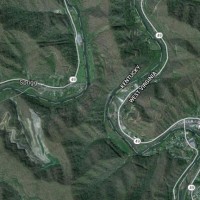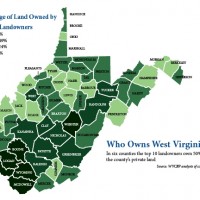The Business Dictionary defines “Encyclopedia” as: “Single or multi-volume publication that contains accumulated and authoritative knowledge on one subject (such as an encyclopedia of architecture or music), a few related subjects (such as an encyclopedia of arts or engineering), or a wide variety of subjects arranged alphabetically (such as the Encyclopedia Britannica). Also spelled as encyclopaedia.
http://www.businessdictionary.com/definition/encyclopedia.html
One usually expects to find “authoritative knowledge” about a subject in an Encyclopedia. An encyclopedia on history, such as “The Encyclopedia of American Biography,” normally presents facts supported by the historical record. When it comes to the Hatfield and McCoy feud, the West Virginia Encyclopedia fails miserably in its duty to inform the public of the historical facts contained in the actual records. The editors prefer the unsubstantiated tales of “feud writers” to the record, and I will prove it by examining the treatment of two men named “Vance” in the West Virginia Encyclopedia.
First, we have Abner Vance, the grandfather of Jim Vance and the great grandfather of Devil Anse Hatfield. The Encyclopedia says: “There are two founding events in Hatfield family history: A 1792 Shawnee raid in Russell County, which widowed Anna Musick and eventuated in her marriage to Ephraim, who was among the party that rescued her from the Indians. And in 1817, preacher Abner Vance fled a Russell County murder charge, finding refuge in Tug Valley. Vance later returned to Virginia and was hanged there, but not before establishing a family line on Tug Fork.” http://www.wvencyclopedia.org/articles/279
The paragraph is much better than most of the Encyclopedia’s feud information; the first half is actually true! The statement: “And in 1817, preacher Abner Vance fled a Russell County murder charge, finding refuge in Tug Valley. Vance later returned to Virginia and was hanged there, but not before establishing a family line on Tug Fork,” is correct ONLY in that Abner Vance was hanged. The rest of the statement is false in every detail, and the record proves it beyond any doubt.
The Encyclopedia repeats the offense in its article on Jim Vance, referring to Abner Vance as a “Tug Valley pioneer.” http://www.wvencyclopedia.org/articles/856
Abner Vance killed Lewis Horton in September, 1817. He was arrested soon afterwards, and spent every day until his hanging in jail. He never set foot in the Tug Valley. The Abner Vance story is reported in detail by Barbara Vance Cherep, the premier Vance researcher, in her article “Abner Vance: Two Sides to Every Story.” http://tgv7.tripod.com/index-12.html
Randy Marcum, a historian with the West Virginia Culture and History Department, gave a talk in July, 2012 wherein he used the research of Ms. Cherep to totally debunk the Abner Vance yarn presented in the West Virginia Encyclopedia. http://youtu.be/C4fHENo67kM
In January, 2014, Ms. Cherep wrote Mr. Ken Sullivan, the editor of the Encyclopedia, challenging the treatment of Abner Vance, and offering to come to Charleston and show the editors the records on Abner Vance. Mr. Sullivan’s response is a glaring example of how the feud story is perpetuated by those who would normally be expected to adhere to the historical record; they absolutely refuse to even look at the record, and cling tenaciously to fables told by “feud writers,” with no actual foundation whatsoever. Mr. Sullivan wrote Ms. Cherep as follows:
“As for Abner Vance, that story has interested me for a long
time. The story as commonly presented is that about 1815 Vance killed
Horton while Horton was fording the Clinch River or in some versions
the Holston River. Vance then fled to Tug Valley where he sired the
line of Vances in that region. He returned to present Southwest
Virginia, however, was tried at Abingdon and hanged. Abingdon is the
county seat of Washington County, through which both forks of the
Holston River flow. I believe Vance may have been tried and cleared in
Russell County, in the Clinch River Valley, then later convicted and
hanged in neighboring Washington County. The story is probably best
known for the song that Abner wrote while awaiting execution. The Abner
Vance story interests us because it helps to root the Vances and
Hatfields in the early history of the region.”
The record shows this to be false in almost every detail. Vance killed Horton in 1817. Vance was arrested shortly thereafter, and spent every day until his hanging in jail. He never set foot in Tug Valley.
He was tried first in Russell County, as Mr. Sullivan says, but he was convicted and sentenced to hang. He appealed the verdict on the basis that the trial court erred in not allowing him to claim insanity as his defense. The appeals court set the verdict aside and ordered Vance tried again, allowing the insanity plea.
Unable to seat another jury in Russell County, due to the lack of available jurors whose minds were not already made up, the trial was moved to Washington County. Vance’s insanity plea was unsuccessful, and he was again convicted and sentenced to hang. The sentence was carried out in July, 1819.
Mr. Sullivan tells Ms. Cherep why he will not even look at her documentary evidence, and will continue to misinform the world about this history:
“The Abner Vance story interests us because it helps to root the Vances and Hatfields in the early history of the region.”
So, because the spurious Abner Vance yarn “helps to root the Vances…in the early history of the region,” Mr. Sullivan will continue to propagate the lie that Abner Vance absconded to the Tug Valley and founded a family there in his encyclopedia.
And he has the audacity to refer to it as “history.”


